Portugal |
|
|
|
| Übersicht – Contents: | |
Portugal |
|
|
|
| Übersicht – Contents: | |
Flaggen – Flags: |
|
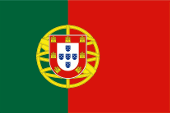 |
National-, Handels- und Marineflagge – national, merchant and naval flag, Seitenverhältnis = ratio = 2:3, Quelle/Source: Corel Draw 4, using Martins-Tuválkin (2004), Public domain, via Wikimedia Commons   |
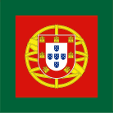 |
Gösch – naval jack, Seitenverhältnis = ratio = 1:1, Quelle/Source nach/by: Flags of the World, Die Welt im bunten Flaggenbild, using Martins-Tuválkin (2004), Public domain, via Wikimedia Commons |
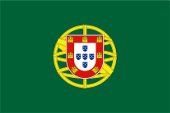 |
Flagge des Präsidenten – flag of the president, Seitenverhältnis = ratio = 2:3, Quelle/Source, nach/by: Flaggen und Wappen, using Martins-Tuválkin (2004), Public domain, via Wikimedia Commons |
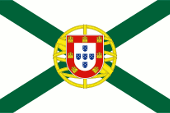 |
Flagge für Minister – flag for Ministers, Seitenverhältnis – ratio = 2:3, Quelle/Source, nach/by: Flags of the World, Die Welt im bunten Flaggenbild, using Martins-Tuválkin (2004), Public domain, via Wikimedia Commons |
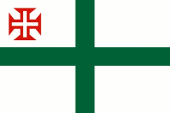 |
Flagge des Chefs des Marinestabs – flag of the Chief of Naval Staff, Seitenverhältnis – ratio = 2:3, Quelle/Source, nach/by: Wikipedia (EN) |
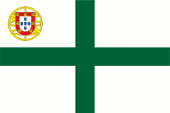 |
Flagge für den Admiral der Flotte – flag for the Admiral of the Fleet, Seitenverhältnis – ratio = 2:3, Quelle/Source, nach/by: Flags of the World, using Martins-Tuválkin (2004), Public domain, via Wikimedia Commons |
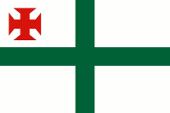 |
Flagge für Admirale – flag for Admirals, Seitenverhältnis – ratio = 2:3, Quelle/Source, nach/by: Flaggenbuch 1939, Flags of the World |
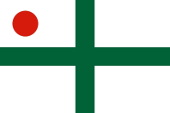 |
Flagge für Vize-Admirale – flag for Vice Admirals, Seitenverhältnis – ratio = 2:3, Quelle/Source, nach/by: Flaggenbuch 1939, Flags of the World |
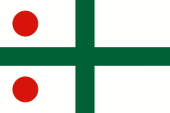 |
Flagge für Konter-Admirale – flag for Rear Admirals, Seitenverhältnis – ratio = 2:3, Quelle/Source, nach/by: Flaggenbuch 1939, Flags of the World |
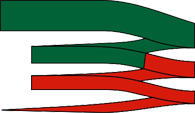 |
Kriegsschiffswimpel – warship pennant, Quelle/Source, nach/by: Flags of the World |
historische Flaggen – historical Flags: |
|
| 12. bis 13. Jahrhundert – 12th to 13th Century | |
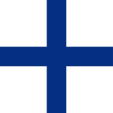 |
1143–1185, Flagge – flag, Quelle/Source, nach/by: Flags of the World |
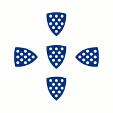 |
1185–1248, Flagge – flag, Quelle/Source, nach/by: Flags of the World  |
| 13. bis 15. Jahrhundert – 13th to 15th Century | |
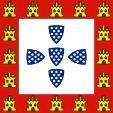 |
1248–1385, Flagge – flag, Quelle/Source, nach/by: Flags of the World |
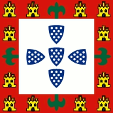 |
1385–1485, Flagge – flag, Quelle/Source, nach/by: Flags of the World  |
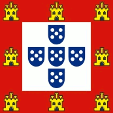 |
1485–1495, Flagge – flag, Quelle/Source, nach/by: Flags of the World |
 |
14./15. Jhd./cent., See-/Handelsflagge – sea/merchant flag, Quelle/Source, nach/by: Flags of the World, Wikipedia (PT) |
 |
14./15. Jhd./cent., See-/Handelsflagge – sea/merchant flag, Quelle/Source, nach/by: Flags of the World, Wikipedia (PT) |
| 16. bis 17. Jahrhundert – 16th to 17th Century | |
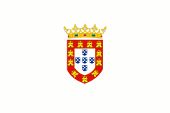 |
1495–1578, Flagge – flag, Quelle/Source, nach/by: Flags of the World |
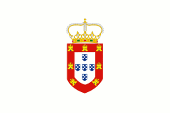 |
1578–1640, Flagge – flag, Quelle/Source, nach/by: Flags of the World |
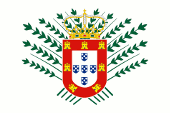 |
1616–1640, Flagge Portugals in der Iberischen Union mit Spanien – flag of Portugal within the Iberian Union with Spain, Quelle/Source, nach/by: Wikipedia (PT) |
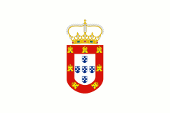 |
1640–1667, Flagge – flag, Quelle/Source, nach/by: Flags of the World |
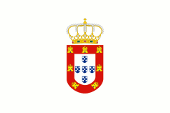 |
1667–1706, Flagge – flag, Quelle/Source, nach/by: Flags of the World |
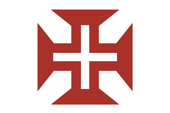 |
16./17. Jhd./cent., Flagge des Christusordens verwendet als See-/Handelsflagge – flag of the Order of Christ used as sea/merchant flag, Quelle/Source, nach/by: Wikipedia (PT) |
| 18. bis 19. Jahrhundert – 18th to 19th Century | |
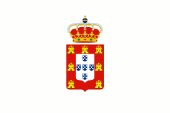 |
1706–1816, Flagge – flag, Quelle/Source, nach/by: Flags of the World |
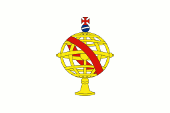 |
18. Jhd./cent., See-/Handelsflagge – sea/merchant flag, Quelle/Source, nach/by: Wikipedia (PT) |
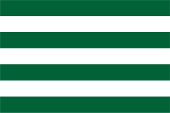 |
18./19. Jhd./cent., See-/Handelsflagge – sea/merchant flag, Quelle/Source, nach/by: Flags of the World, Flaggen aller Seefahrenden Nationen |
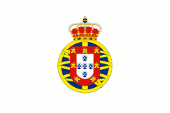 |
1816–1830, Nationalflagge des Vereinigten Königreichs von Portugal, Brasilien und der Algarve – national flag of the United Kingdom of Portugal, Brazil and the Algarves, Quelle/Source, nach/by: Flags of the World |
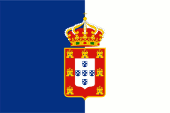 |
1830–1910, Nationalflagge an Land – national flag ashore, Seitenverhältnis – ratio = 2:3, Quelle/Source, nach/by: Flags of the World, Wikipedia (PT)  |
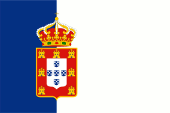 |
1830–1910, Nationalflagge zur See – national flag offshore, Seitenverhältnis – ratio = 2:3, Quelle/Source, nach/by: Flags of the World, Wikipedia (PT)  |
| 20. Jahrhundert – 20th Century | |
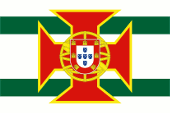 |
1933–1975, Flagge eines Generalgouverneurs Portugiesischer Kolonien – flag of a Governor General of Portugese Colonies Seitenverhältnis – ratio = 2:3, Quelle/Source, nach/by: Die Welt im bunten Flaggenbild, Wikipedia (PT), using Martins-Tuválkin (2004), Public domain, via Wikimedia Commons  |
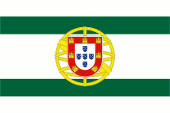 |
1911–1933, Flagge eines Oberkommissars Portugiesischer Kolonien – flag of a High Commissioner of Portugese Colonies, Seitenverhältnis – ratio = 2:3, Quelle/Source, nach/by: Flaggenbuch 1939, Wikipedia (PT), using Martins-Tuválkin (2004), Public domain, via Wikimedia Commons |
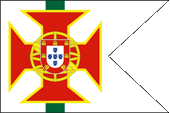 |
1933–1951, Flagge eines Distriktskommandanten Portugiesischer Kolonien – flag of a District Commandant of Portugese Colonies, Seitenverhältnis – ratio = 2:3, Quelle/Source, nach/by: Flaggenbuch 1939, Wikipedia (PT), using Martins-Tuválkin (2004), Public domain, via Wikimedia Commons |
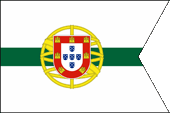 |
1911–1933, Flagge für Gouverneure der Provinzen – flag for Governors of the Provinces, Seitenverhältnis – ratio = 2:3, Quelle/Source, nach/by: Wikipedia (PT), Die Welt im bunten Flaggenbild, using Martins-Tuválkin (2004), Public domain, via Wikimedia Commons |
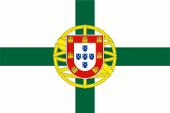 |
1911–1982, Flagge des Marineministers – flag of the Minister for the Navy, Seitenverhältnis – ratio = 2:3, Quelle/Source, nach/by: Flags of the World, Wikibrief (DE), using Martins-Tuválkin (2004), Public domain, via Wikimedia Commons |
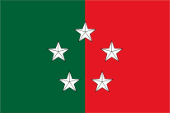 |
1930–1974, Flagge des Verteidigungsministers – flag the of Minister of Defense, Seitenverhältnis – ratio = 2:3, Quelle/Source, nach/by: Wikipedia (PT) |
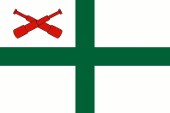 |
bis/to ca. 1960 (?), Flagge des Chefs des Admiralstabs – flag of the Chief of Admiral Staff, Seitenverhältnis – ratio = 2:3, Quelle/Source, nach/by: Die Welt im bunten Flaggenbild, Flags of the World |
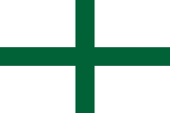 |
bis/to ca. 1960 (?), Flagge des Inspekteurs der Marine – flag of the Inspector of the Navy, Seitenverhältnis – ratio = 2:3, Quelle/Source, nach/by: Flaggenbuch 1939, Flags of the World |
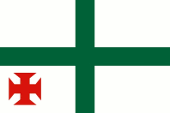 |
bis/to ca. 1960 (?), Flagge des Superintendenten des Flottendienstes – flag of the High Director-General of the Fleet Service, Seitenverhältnis – ratio = 2:3, Quelle/Source, nach/by: Flaggenbuch 1939, Flags of the World |
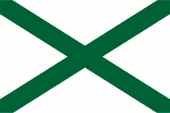 |
bis/to ca. 1960 (?), Ehrenflagge für Generale – honour flag for Generals, Seitenverhältnis – ratio = 2:3, Quelle/Source, nach/by: Flaggenbuch 1939 |
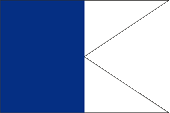 |
1917–1929, Lotsen(ruf)flagge – pilot jack, Seitenverhältnis – ratio = 2:3, Quelle/Source, nach/by: Wikipedia (PT), Diese Art Flaggen wurde im 20. Jahrhundert abgeschafft, heute gilt – This type of flag was abolished in the 20th century, today is: |
| Die
heutige Flagge Portugals wurde per Gesetz am 19.06.1911 eingeführt, und am
30.06.1911 erstmals gehisst. Sie zeigt zwei senkrechte Bahnen in Grün und
Rot, im Verhältnis 2:3, an der Schnittlinie das Staatswappen. Grün ist nicht nur die Farbe der alten Flaggen Portugals sondern auch Farbe des Hauses Bragança, und steht für die Hoffnung und das Meer. Rot steht für die Revolution. Die Farben Portugals sind lediglich für die Darstellung am Monitor im Farbbreich RGB festgelegt. Für den Druck sind die Farbtöne der Flagge nicht exakt definiert. Alle Farben scheinen aus der Praxis heraus definiert zu sein, und zwar, Rot als Pantone 485, Grün als Pantone 349 und Blau als Pantone 288. |
The today’s flag of Portugal was introduced by law on 19th of June in 1911, and hoisted for the first time on 30th of June in 1911. It shows two vertical stripes in green and red in a ratio of 2:3, at the line of joint the coat of arms of the state. Green is not only the colour of the old flags of Portugal but even the colour of the House of Bragança and stands for the hope and the ocean. Red stands for the revolution. The colours of Portugal are only defined for display on the monitor in the RGB colour range. For printing, the colours of the flag are not exactly defined. All colours seem to be defined from practice, namely, red as Pantone 485, green as Pantone 349 and blue as Pantone 288. |
| Die portugiesische Heraldik enthält einige interessante Merkmale: | The Portugese heraldry contains some interesting characteristics: |
|
|
|
|
|
|
|
|
| Die ersten portugiesischen Flaggen zeigten nur ein blaues Kreuz auf weißem Grund. Vermutlich wurde diese Flagge (wie andere Kreuzflaggen auch) vom Papst für den Kreuzzug gegen die Mauren gestiftet. Ab 1185 tauchte der blaue Schild mit den fünf weißen Punkten auf weiß als portugiesische Flagge auf, auch mit fünf Schilden, in Kreuzform angeordnet. | The first
Portugese flags showed only a blue cross on white ground. Probably was this flag (like other cross flags too) donated by the Pope for the crusade against the Moors. Since 1185 arised the blue shield with the five white points on white as Portugese flag, even with five shields arranged in form of a cross. |
| Im Jahre 1252 heiratete König Alfons III. Beatrix von Kastilien, und ab diesem Zeitpunkt wurde die kastillische Heraldik mit der portugiesischen verbunden und ab 1383 noch mit dem grünen Lilienkreuz der neuen Dynastie von Aviz ergänzt. | In the year 1252 marryed King Alfons III. Beatrix of Castilia and since that point in time was combined the Castilian heraldry with the Portugese heraldry and since 1383 added by the green lily-cross of the new dynasty of Aviz. |
| Ab 1495 wurden offiziell nur noch weiße Flaggen mit dem Wappen in der Mitte und einer Krone darüber verwendet. | Since 1495 were officially used only white flags with the coat of arms in the middle and a crown above it. |
| Schon frühzeitig wurden in der Handelsschifffahrt andere Flaggen verwendet, um den Unterschied zwischen einer Privatperson auf See, z.B. einem Handelsschiff, und einem Kriegsschiff im Auftrag des Königs darzustellen. Es sind sehr viele solcher Seeflaggen überliefert, so dass anzunehmen ist, dass es keine einheitliche Regelung gegeben hat. Im 14. und 15. Jahrhundert waren es starke Vereinfachungen der Heraldik Portugals, was für Privatpersonen auch leichter zu reproduzieren war. Im 16. und 17. Jahrhundert wurde auf Seeflaggen häufig das Kreuz des Christusordens verwendet, der schon damals eine Art nationales Symbol war und bis heute geblieben ist. Später wurde die Armillarsphäre auf den See- und Handelsflaggen gezeigt, auch in unterschiedlichen Farben. Im 18. und 19. Jahrhundert wurden horizontal mehrfach grün-weiß gestreifte Flaggen verwendet, mit stark unterschiedlichen Anzahlen von Streifen, die wahrscheinlich ein System hatten. So sollen sieben Streifen in der Küstenschifffahrt verwendet worden sein und neun Streifen in der Hochseeschifffahrt. Es hat aber auch blau-weiß und rot-weiß gestreifte Flaggen gegeben. |
Early on, other flags
were used in merchant shipping to show the difference between a privateer at
sea, e.g. a merchant ship, and a by the king commissioned warship. Many of
such naval flags have been handed down, so it can be assumed that there was
no uniform regulation. In the 14th and 15th centuries, there were strong
simplifications of the heraldry of Portugal, which were also easier to
reproduce for private individuals. In the 16th and 17th centuries, the cross of the Order of Christ was often used on maritime flags, which was already a kind of national symbol then and remains so today. Later, the armillary sphere was shown on maritime and merchant flags, also in different colours. In the 18th and 19th centuries, green and white several times horizontally striped flags were used, with widely varying numbers of stripes, which probably had a system. Thus, seven stripes are said to have been used in coastal shipping and nine stripes in ocean shipping. However, there were also blue-white and red-white striped flags. |
| Am 13.05.1816 wurde im brasilianischen Exil für das Vereinigte Königreich von Portugal und Brasilien eine weiße Flagge angenommen mit dem portugiesischen Schild auf einer gekrönten Armillarsphäre in der Mitte. Die Armillarsphäre war damals das offizielle Emblem Brasiliens. Die Farben Blau und Weiß wurden am 23.08.1823 offiziell für die nationale Kokarde (quasi als Nationalfarben) angenommen. | On 13th of May in 1816 was adoped in Brazilian exile for the United Kingdom of Portugal and Brazil a white flag with the Portugese shield on a crowned armillar-sphere in the middle. The armillar-sphere was at that time the official emblem of Brazil. The colours blue and white were officially adoped for the national cockade (quasi as national colours) on the 23rd of August in 1823. |
| Im Bürgerkrieg (Royalisten gegen Konstitutionalisten) nahmen die Anhänger der Königin Maria (Konstitutionalisten) auf den Azoren am 18.10.1830 eine blau-weiße Flagge an, die, ergänzt um das gekrönte Schild nach ihrem Sieg im Jahre 1833 die Nationalflagge Portugals wurde. | In the civil war (royalists against constitutionalists) adoped the supporters of Queen Maria (constitutionalists) on the Azores Islands on the 18th of October in 1830 a blue-white flag which became – completed by the crowned shield – after her victory in 1833 the national flag of Portugal. |
| Nach der bürgerlichen Revolution im Jahre 1910 wurden die Farben der Flagge in Rot und Grün geändert und die Krone vom Schild entfernt und der Schild auf eine stilisierte Armillarsphäre gelegt. Diese Flagge wurde am 19.06.1911 per Gesetz festgelegt und blieb seither unverändert. Angeblich diente eine Fahne, die an den Masten des Schiffes "Adamastor" befestigt war, das den ersten Schuss der Revolution abfeuerte, als Vorlage für die Gestaltung der Flagge. | After the civil revolution in 1910 the colours of the flag were changed in red and green and the crown was removed from the shield and the shield was layed on a stylized armillar-sphere. This flag was designated per law on 19th of June in 1911 and remained thereafter unchanged. Ostensibly was a flag, which was hoisted on the masts of the vessel "Adamastor", which fired the first shot of the revolution, the pattern for the designing of the flag. |
| Quelle/Source: Flaggen und Wappen der Welt, Die Welt der Flaggen, Flaggen Enzyklopädie, Flags of the World, Volker Preuß | |
Wappen – Coat of Arms: |
|
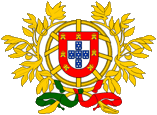 |
Wappen von Portugal – coat of arms of Portugal, Quelle/Source: Tonyjeff, Public domain, via Wikimedia Commons |
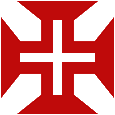 |
Kreuz des Christusordens – cross of the Order of Christ, Quelle/Source, nach by: Flags of the World |
| Das Staatswappen von Portugal zeigt auf einem Schild fünf kreuzförmig angeordnete blaue Schilde mit je fünf weißen Scheiben (altes Portugal) und sieben goldenen Kastelle in einem roten Rand darum (Kastilien). Hinter dem Schild die Armillarsphäre. Zur Bedeutung der einzelnen heraldischen Symbole bitte: siehe "Bedeutung/Ursprung der Flagge". | The coat
of arms of Portugal shows on a shield five cross-shaped arranged blue
shields with ever five white disks (old Portugal) and seven golden castles
in a red border around it (Castillia). Behind the shield the armillar-sphere. To see the meaning of the particular heraldic symbols please look: "Meaning/Origin of the Flag". |
| Quelle/Source: Die Welt der Flaggen | |
Flugzeugkokarde – aircraft roundel: |
|
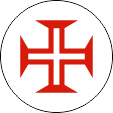 |
Flugzeugkokarde – aircraft roundel Quelle/Source, nach/by: Wikipedia (EN) |
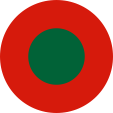 |
1914–1918, Flugzeugkokarde – aircraft roundel Quelle/Source, nach/by: Wikipedia (EN) |
Landkarte – Map: |
Lage – Position: |
Landkarte des Landes – Map of the Country: |
Karte der historischen Iberischen Königreiche |
|
|
| Zahlen und Fakten – Numbers and Facts: | |
|
|
|
|
|
|
|
|
|
|
|
|
|
|
|
|
|
|
|
|
|
| Antike ·
Besiedlung der Region durch Lusitanier (Keltiberer), im Süden Besiedlung
durch Karthager 201 v.Chr. · Eroberung durch das Römische Reich im Zweiten Punischen Krieg gegen Karthago 72 v.Chr. · Bildung der Römischen Provinz Lusitania 395 · bei der Teilung des Römischen Reiches kommt das heutige Portugal an das Weströmische Reich (Rom) 411 · Völkerwanderung, Besiedlung durch germanische Alanen und Sueben 418 · Die Alanen ziehen nach Süden ab, Bildung des Suebenreiches 585 · Das Suebenreich wird an das Reich der Westgoten angeschlossen 712 · Eroberung durch die Araber ca. 850 · Herausbildung der Grenzgrafschaft Portucalia als Teil des Königreichs Leon 1095 · Heinrich von Burgund wird Graf von Portucalia 1139 · Alfons Heinrich (der Sohn von Heinrich von Burgund) nennt sich Alfons I., König von Portugal 1147 · Rückeroberung von Lissabon von den Arabern mit Hilfe deutscher und englischer Kreuzfahrer 1250 · Eroberung der Algarve von den Arabern, damit ist ganz Portugal von den Mauren befreit 1260 · Lissabon wird Königssitz 1267 · Festlegung des Grenzverlaufs zu Spanien (bis heute gültig) 1383 · das burgundische Königshaus stirbt aus 1383 · Wahl von Johann I. (João I.) aus der Burgundischen Nebenlinie von Aviz zum König 1386 · "Windsorvertrag", Portugal bindet sich an England 1415 · Eroberung von Ceuta 1419 · Inbesitznahme von Madeira 1432 · Inbesitznahme der Azoren 1432 · Inbesitznahme der Kapverden 1471 · Eroberung von Guinea 1471 · Eroberung von Tanger 1482 · Entdeckung und Inbesitznahme von Angola 1494 · auf Grund von Streitigkeiten mit Spanien Abschluss des Vertrages von Tordesillas über die Aufteilung der Welt entlang des Meridians 50° w.L. 1499 · Entdeckung von Brasilien durch den portugiesischen Seefahrer Pedro Alvarez Cabral 1507 · beginnende Kolonisierung von Mosambik und Ceylon 1508 · Eroberung von Maskat 1507 · beginnende Kolonisierung von Hinterindien (Indonesien) 1529 · auf Grund von Streitigkeiten mit Spanien Abschluss des Vertrages von Zaragoza über die Aufteilung der Welt zwischen dem Meridian 50° w.L. und dem Meridian 145° ö.L. 1580 · das Königshaus von Aviz stirbt aus, Portugal wird in Personalunion mit Spanien verbunden 1574 · Kolonisierung von Angola 1610 · beginnende Kolonisierung von Timor (Osttimor) 1640 · Johann IV. aus dem Haus Bragança begründet das portugiesische Königtum neu, die Union mit Spanien wird beendet, Portugal wird mit Hilfe Frankreichs wieder unabhängig 1750–1778 · legendäre Schaffensperiode des Ministers Sebastião José de Carvalho e Mello Marquês de Pombal, Portugal wird in die Moderne geführt 1807 · das portugiesische Königshaus Bragança flieht vor den Truppen des französischen Kaisers Napoleón, Portugal wird von französischen Truppen besetzt 1811 · Portugal wird durch englische Truppen befreit, englische Herrschaft unter Lord Bersesford 1821 · Johann VI., König von Portugal, kehrt aus dem brasilianischen Exil heim 07.09.1822 · neue Verfassung, Portugal wird konstitutionelle Monarchie und erlangt seine Souveränität zurück, Brasilien erklärt seine Unabhängigkeit 1853 · mit Königin Maria II. stibt das Haus Bragança aus, ihr Ehemann Ferdinand II. von Sachsen-Coburg-Gotha übernimmt den Thron, Dynastiewechsel 1908 · Ermordung von König Karl I. von Sachsen-Coburg-Gotha 1910 · Absetzung von König Manuel II. von Sachsen-Coburg-Gotha 1911 · Proklamation der Republik 1926–1932 · Präsidialdiktatur des Präsidenten António Oscar de Fragoso Carmona 1932–1968 · Präsidialdiktatur des Ministerpräsidenten Antonio de Oliveira Salazar 1939 · "Iberischer Pakt" mit Spanien 1949 · Portugal wird Mitglied der NATO 1955 · Portugal wird Mitglied der UNO 1961 · Portugal gibt seine Besitzungen in Indien auf (Goa, Diu und Daman) 1968–1974 · Diktatur des Ministerpräsidenten Marcello Caetano 25.04.1974 · Militärputsch ("Nelkenrevolution"), Sturz von M. Caetano, Re-Demokratisierung, Entlassung der Kolonien in die Unabhängigkeit (10.09.1974 Guinea-Bissau, 25.06.1975 Moçambique, 05.07.1975 Kapverden, 12.07.1975 São Tomé und Príncipe, 11.11.1975 Angola, August 1976 Osttimor) 1986 · Portugal wird Mitglied der Europäischen Gemeinschaft 20.12.1999 · die portugiesische Kolonie Macau wird an China abgetreten |
| antiquity
· settlement of the region by Lusitanians (Celtiberians),
settlement by Carthagians in the south 201 B.C. · conquest by the Roman Empire in the Second Punic War against Carthago 72 B.C. · formation of the Roman Province of Lusitania 395 · at the partition of the Roman Empire comes the today's Portugal to the West Roman Empire (Rome) 411 · Migration Period, settlement by Germanic Alanes and Suebes 418 · the Alanes withdraw to south, formation of the Empire of the Suebes 585 · the Empire of the Suebes becomes connected to the Empire of the Western Goth 712 · conquest by the Arabs ca. 850 · evolution of the frontier-county Portucalia as part of the Kingdom of Leon 1095 · Henry of Burgund becomes Count of Portucalia 1139 · Alfons Henry (the son of Henry of Burgund) names itself Alfons I., King of Portugal 1147 · re-conquest of Lisboa from the Arabs by support of German and English crusaders 1250 · conquest of the Algarve Region from the Arabs, in this way is whole Portugal liberated from the Moors 1260 · Lisboa becomes seat of the king 1267 · fixing of the frontier line with Spain (valid until today) 1383 · the Burgund house of the kings vanishes 1383 · election of John I. (João I.) from the Burgund byline of Aviz to the king 1386 · "Windsor Treaty", Portugal ties to England 1415 · conquest of Ceuta 1419 · appropriation of the Madeira Islands 1432 · appropriation of the Azores Islands 1432 · appropriation of the Cape Verde Islands 1471 · conquest of Guinea 1471 · conquest of Tanger 1482 · discovery and appropriation of Angola 1494 · because of quarrels with Spain pass of the Treaty of Tordesillas about the division of the world along the meridian 50° w.L. 1499 · discovery of Brazil by the Portugese seafarer Pedro Alvarez Cabral 1507 · beginning colonization of Moçambique and Ceylon 1508 · conquest of Masquat 1507 · beginning colonization of Farther India (Indonesia) 1529 · because of quarrels with Spain pass of the Treaty of Zaragoza about the division of the world along the meridian 50° w.L. and the meridian 145° e.L. 1580 · the house of the kings of Aviz vanishes, Portugal becomes united with Spain in personal union 1574 · colonization of Angola 1610 · beginning colonization of Timor (East Timor) 1640 · John IV. from the House of Bragança re-establishes the Portugese kingship, the union with Spain becomes terminated, Portugal becomes independent again under support of France 1750–1778 · legendary times of the work of the Minister Sebastião José de Carvalho e Mello Marquês de Pombal, Portugal becomes guided in the modern times 1807 · the Portugese house of the Kings of Bragança flees from the troops of the French Emperor Napoleón, Portugal becomes occupied by French troops 1811 · Portugal becomes liberated by English troops, English power under Lord Bersesford 1821 · John VI., King of Portugal, returnes from the Brazilian exile 7th of September 1822 · new constitution, Portugal becomes a constitutional monarchy and re-achieves its sovereignty, Brazil declares its independence 1853 · with Queen Maria II. vanishes the House of Bragança, her husband Ferdinand II. of Saxony-Coburg-Gotha takes over the throne, change of dynasty 1908 · assassination of King Carl I. of Saxony-Coburg-Gotha 1910 · deposition of King Manuel II. of Saxony-Coburg-Gotha 1911 · proclamation of the republic 1926–1932 · presidial dictatorship of the President António Oscar de Fragoso Carmona 1932–1968 · presidial dictatorship of the Premier Antonio de Oliveira Salazar 1939 · "Iberian Pact" with Spain 1949 · Portugal becomes a member of the NATO 1955 · Portugal becomes a member of the UNO 1961 · Portugal gives up its possessions in India (Goa, Diu and Daman) 1968–1974 · dictatorship of the Premier Marcello Caetano 25th of April 1974 · military coup d’état ("Carnation's Revolution"), overthrow of M. Caetano, re-democratization, dismissal of the colonies in the independence (10th of September 1974 Guinea-Bissau, 25th of June 1975 Mosambik, 5th of July 1975 Cape Verde Islands, 12th of July 1975 São Tomé und Príncipe, 11th of November 1975 Angola, August 1976 East Timor) 1986 · Portugal becomes a member of the European Economic Community 20th of December 1999 · the Portugese Colony of Macau becomes ceded to China |
| Quelle/Source: Atlas zur Geschichte, Weltgeschichte, Wikipedia (DE), World Statesmen, Volker Preuß |
| Der Name "Portugal" geht auf den alten Namen der Stadt Porto zurück. Zunächst hieß sie "Cale", nach der Römischen Eroberung und Kolonisierung wurde noch ein "Portus" (Hafen) davorgesetzt → "Portus Cale". Daraus entwickelte sich nach 712 (der Eroberung der Gegend durch die Araber) die Grenzgrafschaft "Portucalia", die 1139 Königreich Portugal wurde. | The name
"Portugal" has its roots in the old name of the City of Porto. First of all
its name was "Cale", after the Roman conquest and colonization was set
before a "Portus" (harbor) → "Portus Cale". From that developed after 712 (the conquest of the region by the Arabs) the Frontier-County "Portucalia", which became in 1139 the Kingdom of Portugal. |
| Quelle/Source: Handbuch der geographischen Namen | |